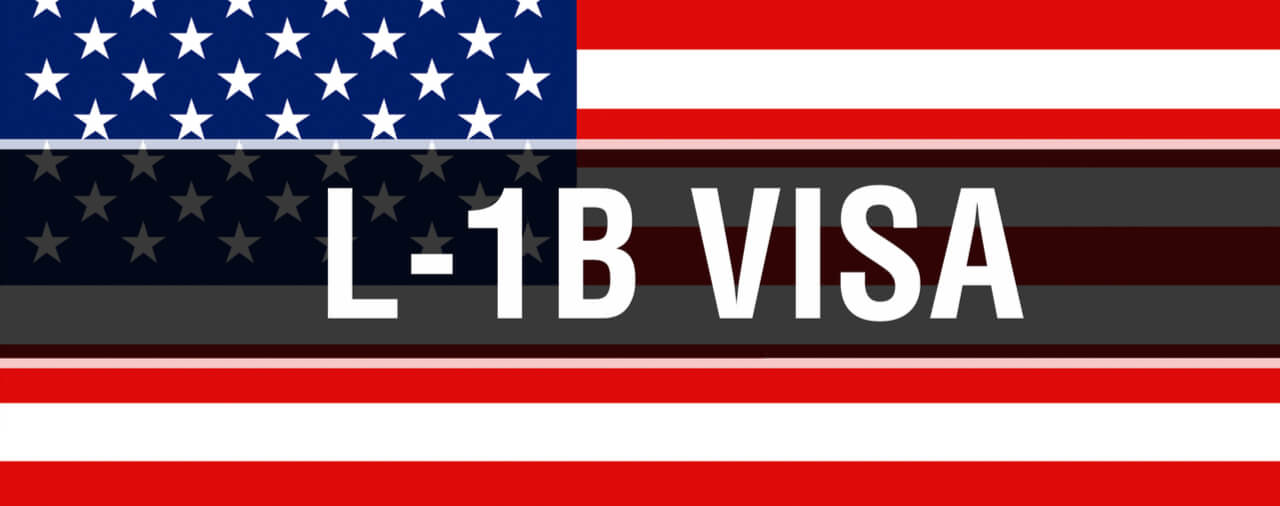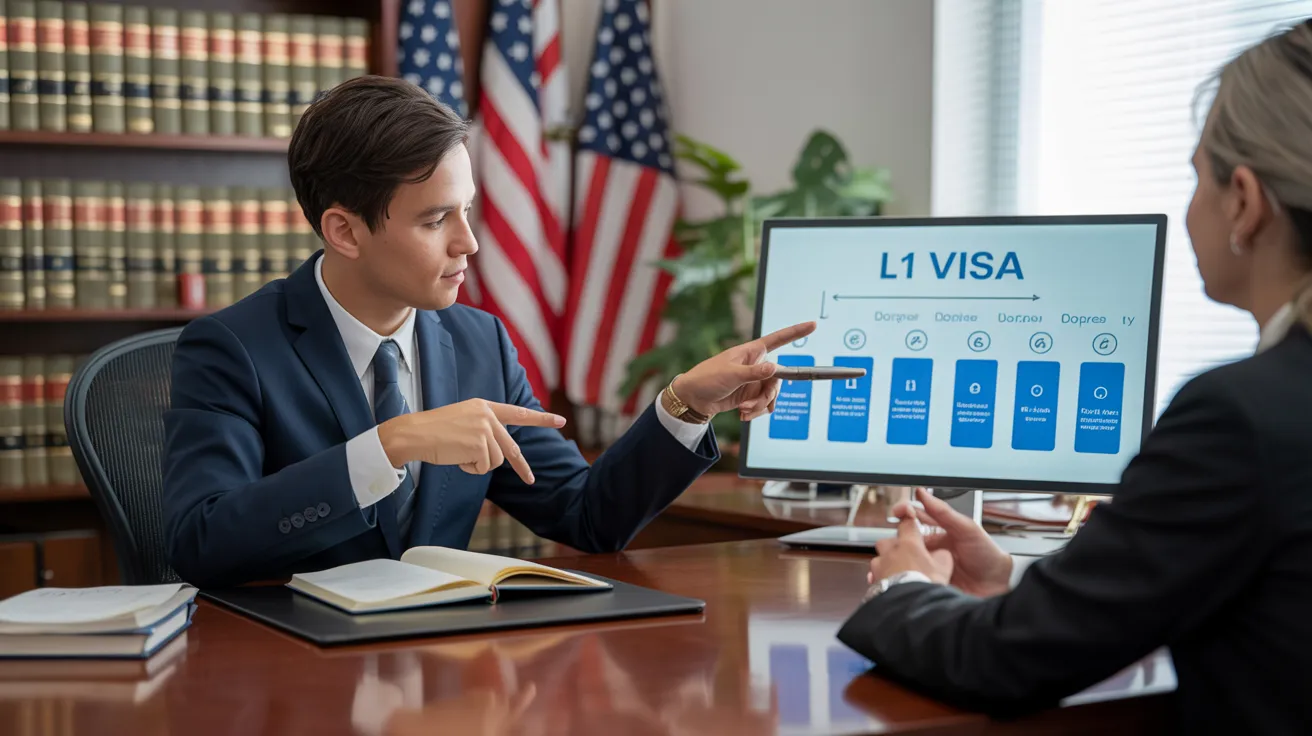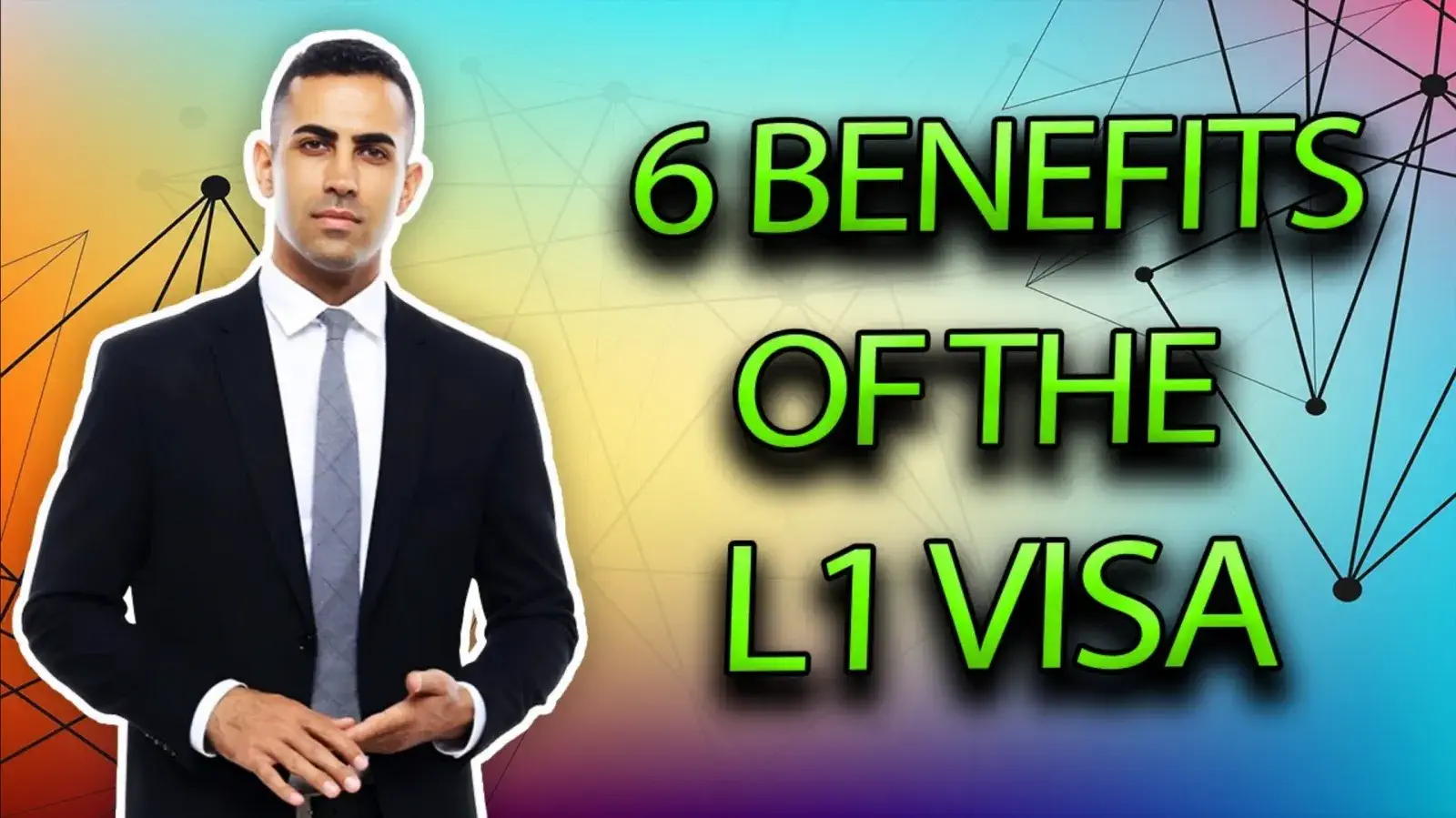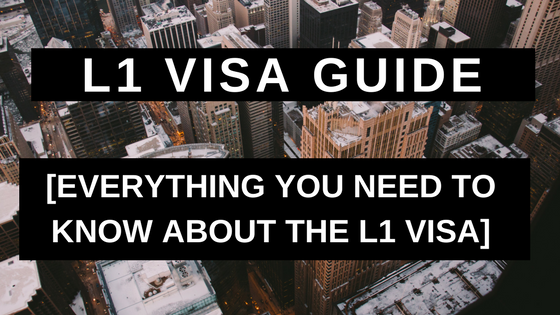Start L1 Visa Today
Opening Opportunities: A Comprehensive Guide to the L1 Visa Process
The L1 visa process offers an essential pathway for multinational companies looking for to move vital workers across boundaries. Understanding the nuances of qualification criteria, the differences between L-1A and L-1B visas, and the intricacies of the application procedure can substantially influence a candidate's success. However, navigating this complicated landscape is not without its challenges, and careful interest to paperwork and company sponsorship is essential. As we discover the key elements of this process, the approaches for overcoming potential barriers will certainly end up being obvious, disclosing how informed preparation can open a globe of possibilities.
Recognizing the L1 Visa
Understanding the L1 visa requires recognizing its importance as a crucial tool for international companies looking for to transfer competent staff members in between international offices. This non-immigrant visa classification helps with the activity of executives, managers, and specialized expertise employees to the USA, therefore making it possible for organizations to preserve functional connection and harness worldwide talent successfully. The L1 visa is split right into two key classifications: L-1A for managers and executives, and L-1B for employees possessing specialized knowledge.The L1 visa offers a critical function in boosting a firm's one-upmanship in the global industry - L1 Visa. By enabling business to move their crucial workers, services can ensure that essential jobs are managed by qualified individuals that are currently accustomed to the firm's society and functional procedures. This internal transfer system not only promotes understanding sharing yet likewise promotes innovation and collaboration across borders.Moreover, the L1 visa is typically preferred for its reasonably simple application procedure contrasted to other visa classifications, as it enables dual intent, allowing holders to seek long-term residency while on a short-term job visa. This attribute makes the L1 visa particularly appealing for both employers and staff members, as it streamlines the path for experienced experts to develop long-term residency in the USA
Qualification Criteria
Qualification for the L1 visa rests on a number of essential requirements that ensure both the worker and the company meet specific qualifications. This non-immigrant visa is designed for international companies to move workers from international offices to united state counterparts.Firstly, the employer needs to be a certifying organization, that includes a moms and dad company, branch, associate, or subsidiary of an U.S. service. The business must have been doing business for a minimum of one year both in the U.S. and abroad. This ensures that the company has adequate functional stability and a genuine presence.Secondly, the worker must hold a supervisory, executive, or specialized understanding setting. For L1A visas, the applicant has to demonstrate managerial or executive certifications, while L1B visas concentrate on specialized knowledge related to the company's products, solutions, or processes. Additionally, the employee must have helped the foreign entity for at the very least one constant year within the last three years prior to their application.Lastly, the worker's function in the U.S. should align with their previous setting, ensuring that their abilities and proficiency are leveraged for the firm's benefit.
Types of L1 Visas
The L1 visa classification makes up 2 primary kinds designed to assist in the transfer of staff members within multinational business: the L1A visa for supervisors and execs, and the L1B visa for staff members with specialized expertise. Each type offers distinctive objectives and has particular qualification criteria.The L1A visa is tailored for people that hold supervisory or executive settings within a firm. This visa makes it possible for top-level staff members to transfer to a united state branch, subsidiary, or affiliate of the very same company. Applicants for the L1A visa must demonstrate that they have actually been utilized in a supervisory or executive capability for at the very least one constant year within the previous 3 years before their application. Additionally, this visa uses a much longer period of keep, at first given for 3 years, with the possibility of expansions for approximately 7 years.In contrast, the L1B visa is planned for experts with specialized knowledge pertaining to the firm's products, solutions, or processes. To qualify, applicants must prove that their expertise is vital to the organization which they have helped a minimum of one continuous year within the last three years in a duty that needed this specialized expertise. The L1B visa is originally provided for 3 years, with expansions readily available for approximately five years.Both visa types are necessary for business seeking to enhance their international operations by leveraging competent personnel, thereby advertising development and effectiveness within the U.S. market.
Application Process
Guiding with the L1 visa process involves numerous important actions that must be thoroughly complied with to guarantee a successful outcome. The procedure begins with the united state company, who need to first establish eligibility by showing a qualifying relationship with the international entity and verifying that the staff member satisfies the particular needs for the L1 visa category being sought.Once qualification is validated, the employer initiates the procedure by filing Kind I-129, the Application for a Nonimmigrant Worker, with the U.S. Citizenship and Immigration Provider (USCIS) This form must be come with by a detailed summary of the job tasks to be performed, the organizational framework of both the U.S. and foreign entities, and the worker's qualifications. It's important to verify that all information is exact and full, as noninclusions or errors can bring about delays or denials.Upon authorization of the I-129 application, the next action involves the worker requesting the L1 visa at a united state embassy or consulate in their home nation. This phase requires the conclusion of Form DS-160, the Online Nonimmigrant Visa, and arranging a meeting. During the meeting, the applicant should provide proof sustaining their qualifications and the company's petition.After the visa is provided, the employee can enter the USA to work in the designated function. Generally, cautious prep work and adherence per action of the application procedure are crucial for an effective L1 visa end result.
Needed Documentation

Essential Kinds Required
Maneuvering the L1 Visa process calls for mindful focus to the essential types and documentation essential for an effective application. The key form required is the Kind I-129, Petition for a Nonimmigrant Employee, which have to be completed and submitted by the U.S. company. This form outlines the information of the work deal and the qualifications of the worker seeking the L1 Visa.Alongside Kind I-129, the candidate will require to complete Form I-539 if coming with family participants are also making an application for visas. Additionally, the company needs to provide evidence of the qualifying relationship in between the U.S. entity and the foreign entity, typically requiring the submission of corporate papers such as short articles of consolidation or financial statements.Moreover, it is vital to include the L Classification Supplement to Form I-129, which defines the kind of L Visa being asked for-- either L-1A for supervisors and execs or L-1B for staff members with specialized knowledge. Applicants ought to guarantee that all types are authorized and dated suitably, as incomplete entries can lead to hold-ups or denials. Appropriately setting up these crucial types lays the foundation for a smoother L1 Visa process.

Supporting Evidence Needs
Supporting documents is crucial for a successful L1 Visa, as it corroborates the claims made in the application. Applicants have to give a range of records to show eligibility for the visa, which is classified into 2 primary types: proof of the qualifying relationship between the united state and international entities and proof of the candidate's qualifications.To develop the connection, candidates need to submit documents such as corporate organizational charts, economic declarations, and proof of possession. These papers validate that the foreign firm has a certifying partnership with the united state company, whether as a parent company, subsidiary, branch, or affiliate.For the candidate's qualifications, vital papers consist of a comprehensive work letter from the international employer, laying out the applicant's task title, obligations, and period of employment. Furthermore, instructional qualifications, such as degrees and diplomas, should be offered to prove the candidate's knowledge in the relevant field.
Employer Sponsorship Documents

Typical Challenges
Steering the L1 visa procedure offers numerous usual difficulties that candidates ought to understand. Secret problems commonly include strict paperwork demands, prospective delays in handling times, and the necessity for rigorous lawful compliance. Understanding these barriers can assist applicants much better prepare and alleviate dangers throughout their visa trip.
Documentation Requirements
The L1 visa process commonly offers substantial obstacles associated with documents requirements. Applicants have to supply substantial documentation to establish eligibility, which can result in confusion and prospective hold-ups. Trick files include evidence of a qualifying relationship in between the U.S. and foreign company, proof of the candidate's employment background, and in-depth info concerning the job function in the U.S.One common difficulty is collecting adequate evidence to demonstrate the nature of the qualifying connection. Business usually struggle to existing clear organizational charts or monetary statements that illustrate the link in between the entities. Furthermore, making certain that letters of support from companies properly show the candidate's job responsibilities and certifications is necessary, as unclear descriptions can cause denials.Another issue arises from the need for detailed work descriptions that align with the L1 visa classifications. Applicants need to articulate not just their present duty yet likewise their supervisory or specialized knowledge responsibilities clearly. This necessitates a comprehensive understanding of both the candidate's position and the regulatory language made use of in L1 visa.
Handling Dead Time
Experiencing delays in handling times is a common challenge dealt with by L1 visa candidates, usually leading to aggravation and unpredictability. A number of factors add to these hold-ups, including high application quantities, boosted scrutiny of applications, and administrative stockpiles within the united state Citizenship and Migration Solutions (USCIS) Applicants may find that handling times can differ substantially depending upon the service facility managing their application, as each center has its own workload and efficiency degrees. Additionally, the intricacy of the candidate's situation, such as the requirement for extensive documents or information, can additionally extend wait times.In some circumstances, problems related to the candidate's present migration status or previous visa background may also result in extra hold-ups, as USCIS might need more testimonial or details. It is necessary for prospects to remain proactive throughout this period, maintaining open interaction with their companies and lawful agents to address any possible problems promptly.Understanding these processing time difficulties can aid L1 visa applicants prepare for possible delays and minimize the effect on their change and job plans. Persistence and diligence are vital virtues in navigating this intricate procedure.
Lawful Compliance Issues
Many L1 visa candidates encounter lawful compliance concerns that can complicate their journey towards acquiring the visa. Recognizing and adhering to the particular regulations set by the U.S. Citizenship and Migration Services (USCIS) is crucial. Common challenges consist of demonstrating the certifying relationship between the foreign and united state companies, as well as verifying that the candidate possesses the requisite specific knowledge or supervisory capacity.Additionally, applicants must provide detailed documentation describing their task duties, business structure, and financial viability of the U.S. entity. Insufficient or unreliable paperwork can cause delays or perhaps denials. Companies should likewise ensure that they adhere to labor regulations, consisting of wage and working problem criteria, which can impact visa eligibility.Another common issue involves preserving compliance with the terms of the visa once given. Modifications in employment condition, work obligations, or firm structure can demand modifications to the visa, which otherwise addressed quickly can cause legal issues. Therefore, remaining informed concerning conformity requirements and seeking legal guidance when required is essential to navigate the intricacies of the L1 visa process efficiently.
Tips for Success
Success in the L1 visa procedure often rests on thorough prep work and interest to detail. To improve your possibilities of approval, start by thoroughly recognizing the qualification needs for both the L1A and L1B visa categories. Examine whether your position at the company qualifies as supervisory, executive, or specialized understanding, as this categorization significantly impacts your application.Next, gather substantial documents that corroborates L1 Visa your insurance claims. This includes organizational charts, thorough task descriptions, and proof of the company's operational framework. Clear and concise proof of the qualifying partnership between the U.S. entity and the international entity is vital. Confirm that all files are organized logically and provided in a specialist fashion, as this shows your commitment and severity about the application.Engage the services of a knowledgeable migration lawyer that concentrates on L1 visas. Their competence can show very useful, guiding you through complicated policies and assuring that all paperwork follows present laws. In addition, prepare for the interview by exercising responses to usual questions and preparing to review your role and contributions to the company detailed.
Frequently Asked Concerns
Can Household Members Come With the L1 Visa Owner?
Yes, member of the family of L1 visa holders, including spouses and unmarried youngsters under 21, can come with the primary visa holder. They may additionally obtain L2 visas, which permit them to live in the USA.
How Much Time Can I Remain On an L1 Visa?
The L1 visa permits first stays of approximately three years, with the opportunity of extension. L1A visa holders might stay for an optimum of seven years, while L1B visa holders can remain for 5 years.
Can L1 Visa Owners Get a copyright?
Yes, L1 visa holders can request an environment-friendly card. L1 Visa. They may seek permanent residency via employment-based classifications, usually calling for sponsorship from their company, given they meet the essential qualifications and paperwork needs
What Occurs if My L1 Visa Is Refuted?
If your L1 visa is refuted, you might get a notification outlining the factors for denial. You can look for to appeal the decision, reapply, or explore alternative visa options based on your scenarios.
Exist Any Traveling Constraints With an L1 Visa?
An L1 visa generally enables worldwide traveling; nevertheless, re-entry to the U. L1 Visa Requirements.S. rests upon maintaining valid standing. Travelers must guarantee compliance with visa problems to prevent issues upon return
Verdict
